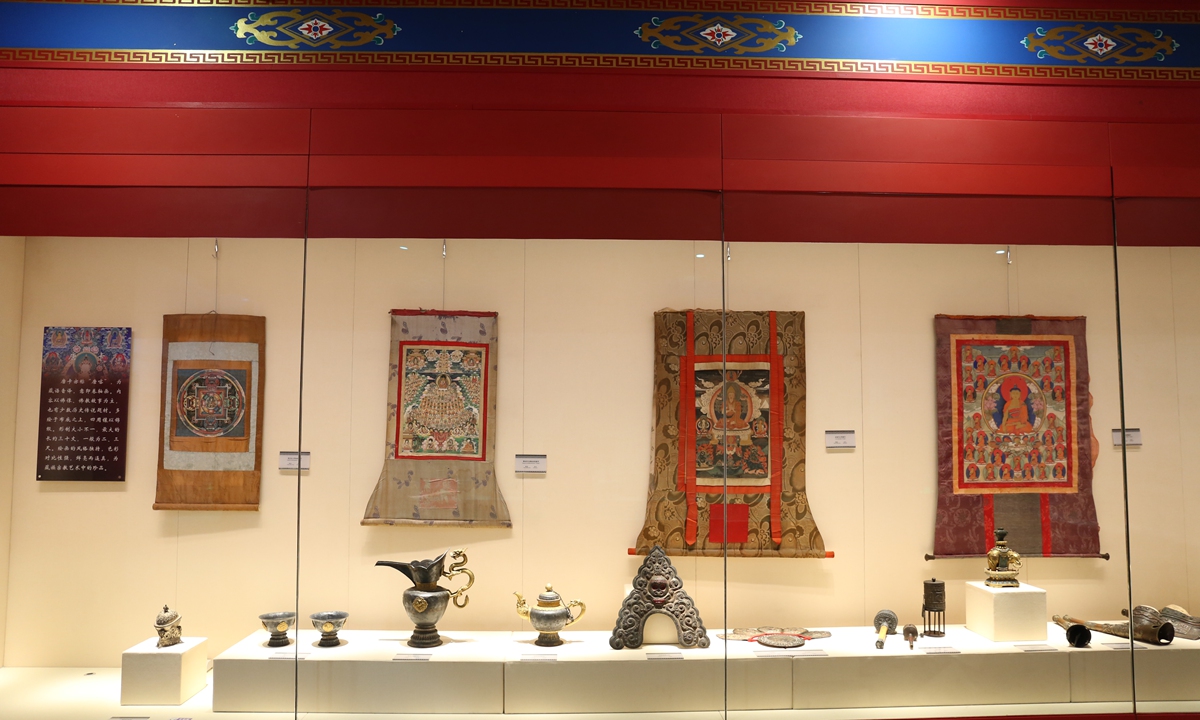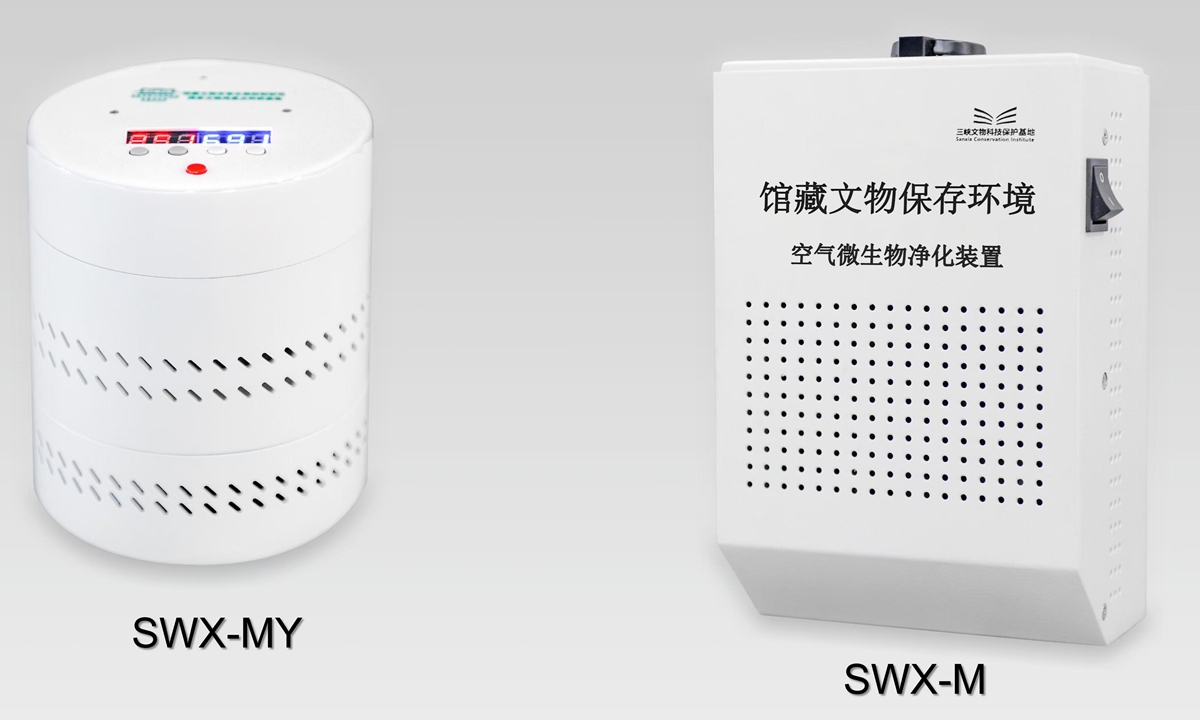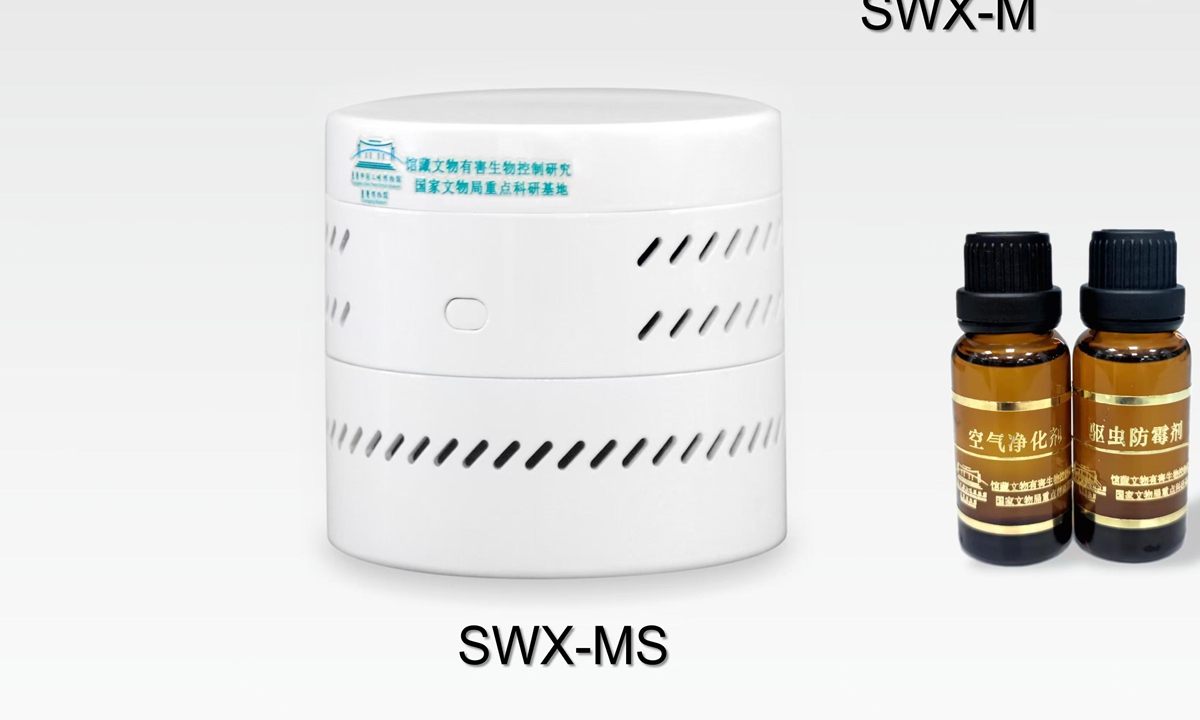
Exhibits on display at the Chongqing Museum Photo: VCG
An innovative patented "purification kit" that protects cultural relics by clearing airborne microbial substances has been put into use by the Chongqing China Three Gorges Museum (Chongqing Museum).
The device works like an incense burner filled with specially designed essential oils that inhibit the growth of airborne microbes, which can can lead to mold and pests issues for relics, Tang Huan, the deputy director of the Museum's Cultural Relics Protection and Archaeology Department, told the Global Times on Sunday.
"We innovated this by getting rid of commonly used substances like ethylene oxide. We were looking for some new designs that would better protect relics, people and also the environment," Tang remarked.
Starting development in 2017, the purification kit now includes three different devices that are named "Yuan Yuan," "Fang Fang" and "Dun Dun." The devices have the same basic design, but the "Dun Dun" edition has been updated with a temperature and humidity sensor.
The automatic design allows different parameters of the museum environment to be monitored. They are also equipped with alarm systems that inform experts about potential risk of mold. The design's flexibility has made it useful at the Chongqing Museum, as well as other similar exhibition facilities in Northwest China's Xinjiang Uygur Autonomous Region.
Tang told the Global Times that the devices can greatly improve the effectiveness of pest control at museums.
"We know technology like 3D printing and modeling are commonly used for preserving artifacts in China, but in the niche sector of protecting in-house relics, our design is still unique," Tang told the Global Times.
Prior to the new kit, the Chongqing China Three Gorges Museum had started to explore pest-control solutions as far back as the 1990s. It has established a repository that collects information about disease-causing bacteria and insect species that pose a threat to cultural artifacts.
A total of 182 types of bacteria, eight species of pests and more than 8,000 photos have been added to the data bank.
To get more experts to contribute, the museum has also built the first online expert system in China for common biological diseases that pose a danger to cultural relics. This system has greatly enhanced the ability of cultural relics protectors to perceive and manage the risks of pests and mold.
"Now we have six types of pests in the system, and we hope this number can increase as the system develops," Tang remarked.
Against the backdrop of technological innovations empowering the cultural relic conservation sector, the expert told the Global Times that new innovations have "significantly boosted their work efficiency" by making diagnosing issues related to relics quick and accurate.
Noting that this combination of "heritage and technology" reveals China's strength in protecting cultural heritage, cultural sociologist Chu Xin told the Global Times that these technologies can also bring the public closer to Chinese history.
In May, to celebrate the 50th anniversary of the discovery of the Western Han Dynasty (206BC-AD25) Mawangdui Tomb, a 3D digital sculpture of the site's Lady Xinzhui was revealed by the Hunan Museum. The digital representation was created based on an X-ray scan of Xinzhui's skull, which was discovered in the 1970s.
"The interactive nature of digital technology is helping us to hold a dialogue with the country's historical culture," Chu told the Global Times.

Patented purification devices innovated by China Three Gorges Museum (Chongqing Museum) Photo: Courtesy of China Three Gorges Museum (Chongqing Museum)

Patented purification device of "Yuan Yuan" innovated by China Three Gorges Museum (Chongqing Museum) Photo: Courtesy of China Three Gorges Museum (Chongqing Museum)






